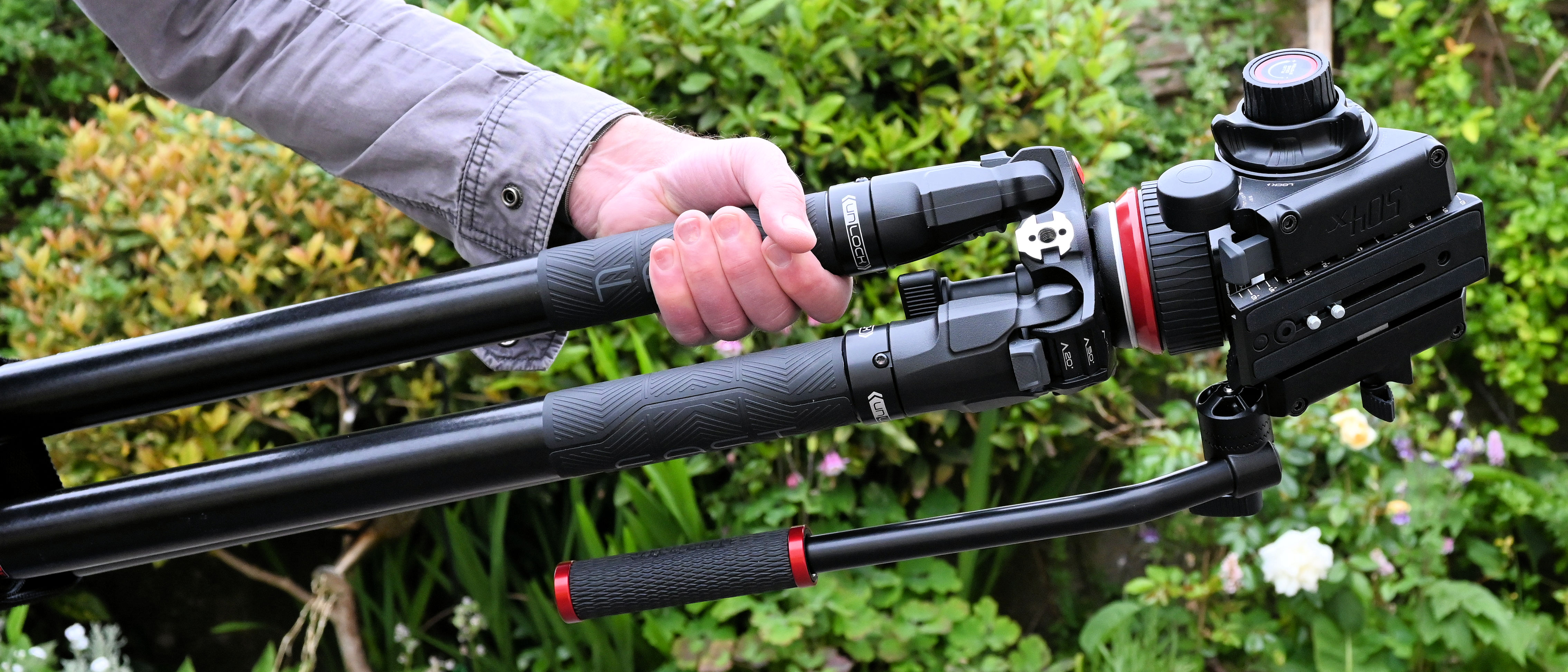Digital Camera World Verdict
The 504X Fluid Video Head in this up-market kit for pro-grade video shooting is a masterpiece in its own right. It’s highly advanced and very versatile yet simple and intuitive to use. The head is supported by a set of 635 Fast Single Leg Carbon legs, which give rock-solid support. It’s ‘fast’ because the three sections in each leg can be extended or retracted with a single twist of the outer section. The kit has a hefty 12kg load rating but weighs an entirely manageable 5.8kg, and comes complete with a padded bag. Build quality and operational performance is absolutely superb throughout.
Pros
- +
Smooth pan and tilt, adjustable fluidity
- +
4-position counterbalance system
- +
Smart range of advanced features
- +
Quick and easy setup
Cons
- -
Spreader sold as an optional extra
- -
Overkill for lightweight cameras
- -
Expensive but very good value
Why you can trust Digital Camera World
The Manfrotto 504X Fluid Video Head with 635 Fast Single Leg Carbon Tripod is designed for high-end and professional-grade video capture. As such, it’s expensive to buy but, considering what you get for your money, it’s competitively priced. The product code is MVK504XSNGFC, which doesn’t easily stay in the mind or trip off the tongue, but the combination of 504X head and 635 legs is all you really need to know.
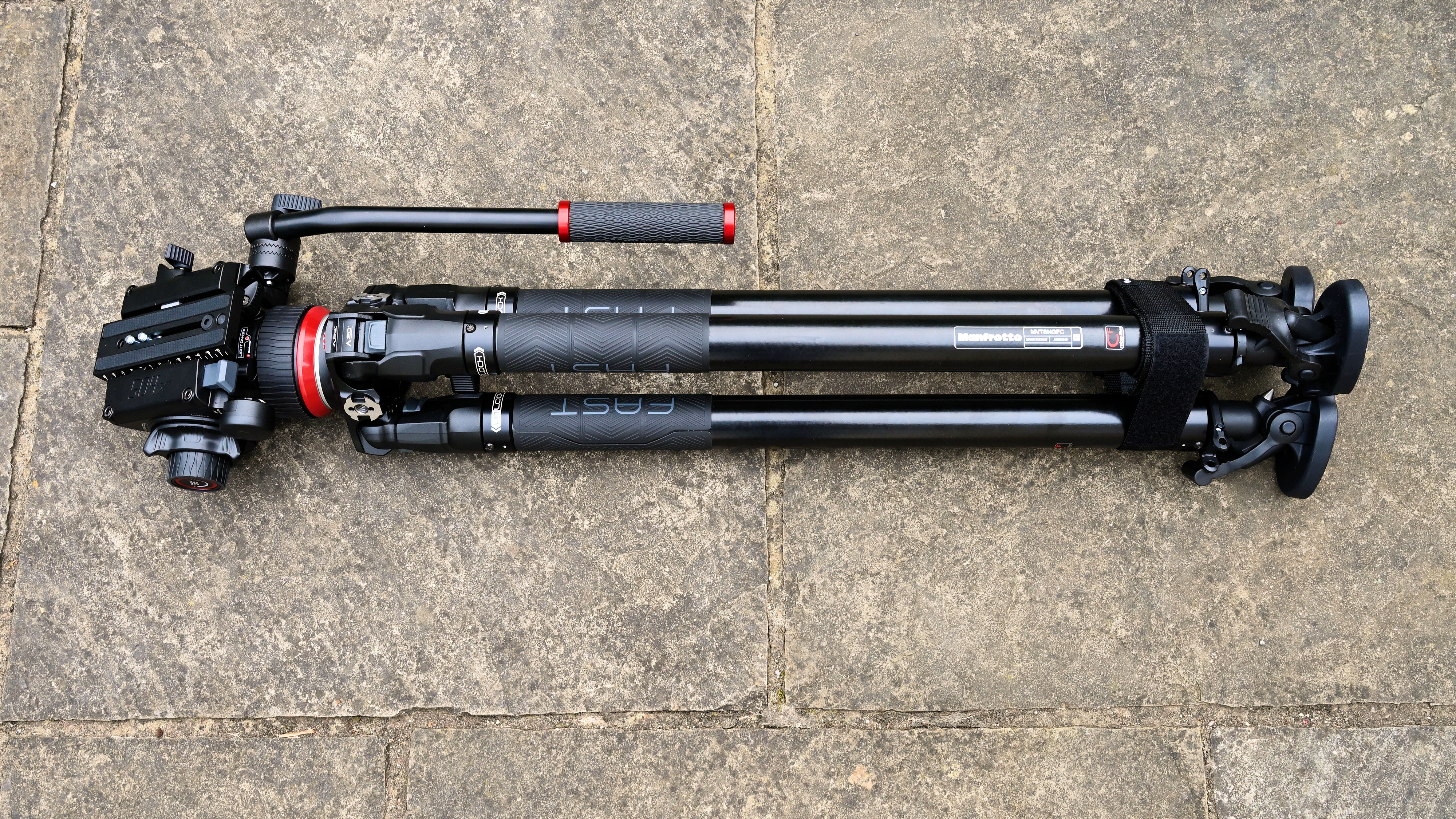
The advanced feature set aims to give videographers and filmmakers the ultimate in speedy setup, versatility, and ease of use. Tripod manufacturers often seem to pull maximum load ratings out of the air, but the 12kg safety payload of this kit adheres to official UNI/PdR 105:2021 standards.
Specifications
Material: Carbon fiber + aluminum
Folded height: 89.5cm
Maximum operating height: 171cm
Minimum operating height: 44.5cm
Head: 504X Fluid Video Head
Weight: 5.8kg
Load rating: 12kg
Sections per leg: 3
Leg section diameters: 29.2, 24.8, 20.4mm
Locking leg angles: 3 (20, 50, 70 degrees)
Feet: Spikes with rubber overshoes
Bag included: Padded bag
Key features
The fluidity of any video head is a key feature, to ensure smooth panning and tilting for tracking movement. Putting an emphasis on this, the head has consistently adjustable pan and tilt drag, from zero to maximum friction settings. Locking knobs are also featured so that either axis can be locked off independently.
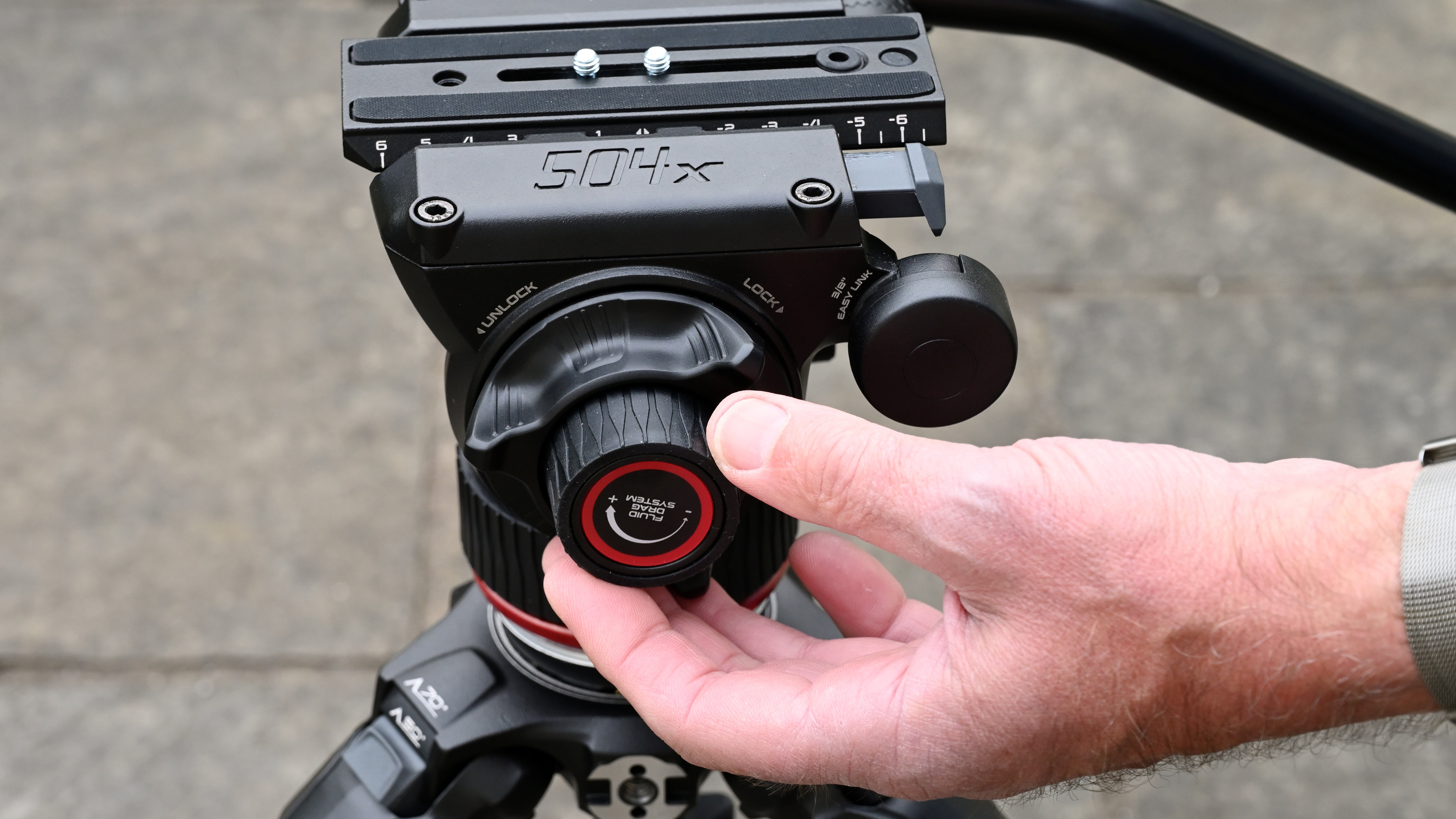
Sticking with the head, it features a flat base with a 75mm diameter, so it can be used independently on other supports and rails. For native use as part of this kit, it connects to a 75mm bowl to enable easy leveling, and there’s also a 60mm adapter for smaller heads.
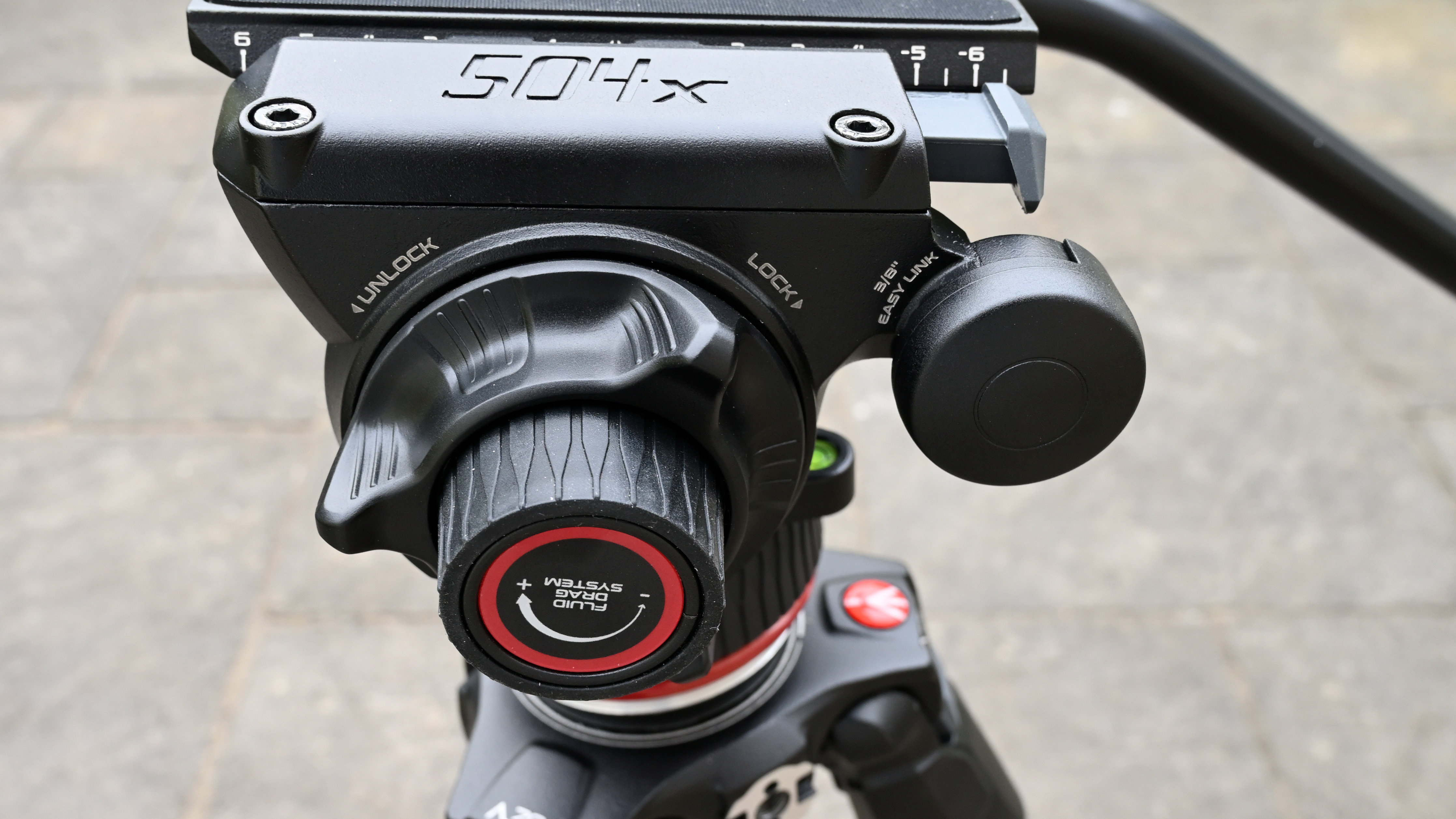
As you’d expect, the pan handle can be attached to the left or right of the head, and a protective cap is supplied for the side that’s not in use. You can also use this as an Easy Link socket for attaching accessories. A 3/8-inch threaded accessory socket is also positioned towards the front right-hand side of the head. Back at the back, so to speak, there’s a bubble level to aid easy leveling. Leveling in the dark is just as easy, thanks to a built-in coin battery-powered LED lamp with an on/off switch. There’s a warning light for when the battery runs down, and it’s easily replaceable without the need for any tools.
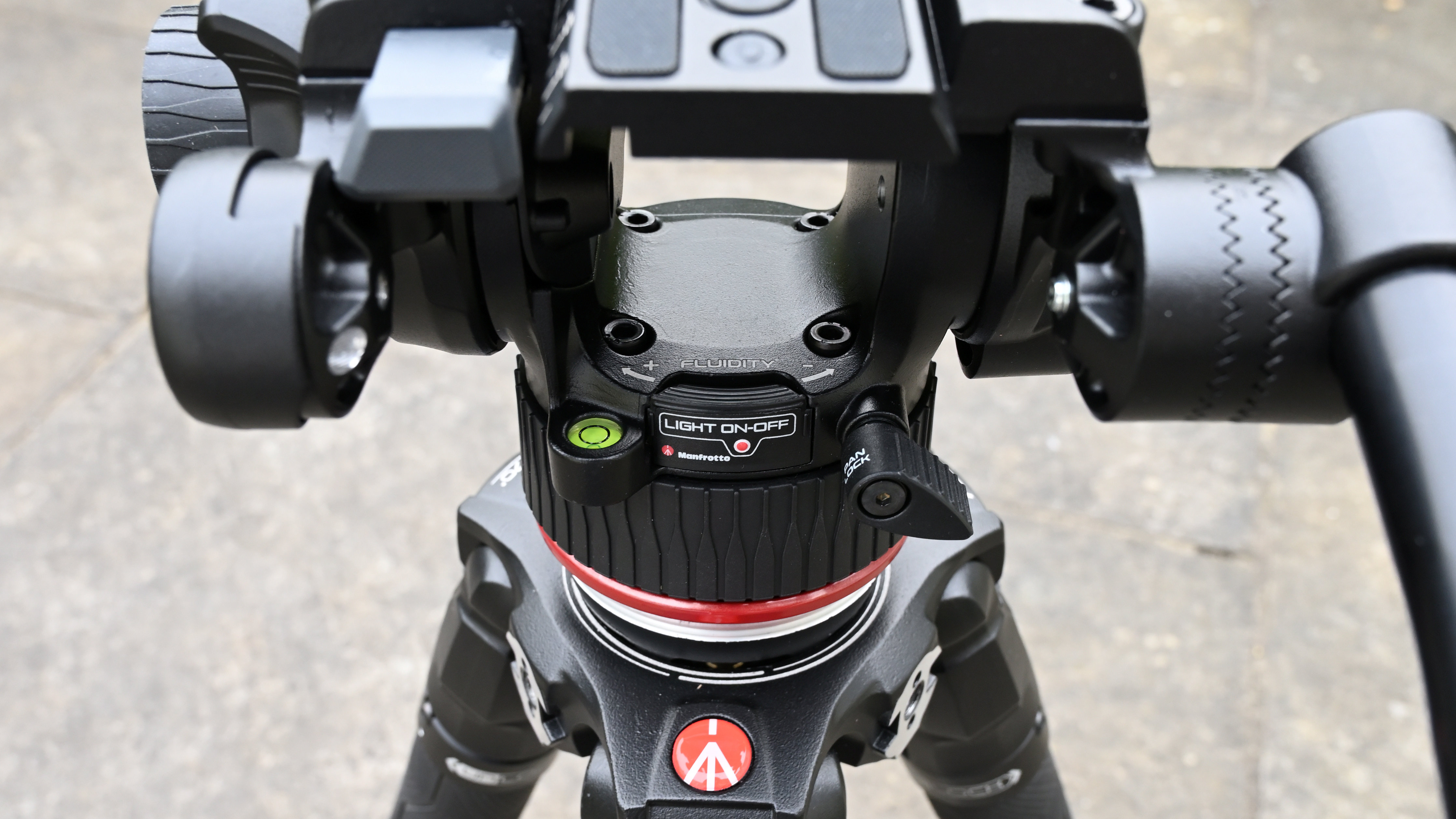
The head has a 55mm center of gravity and comes complete with a 4-position counterbalance system. This enables you to adjust to different camera weights with click-stop settings of 0, 2.2, 4.4, and 6.5kg.
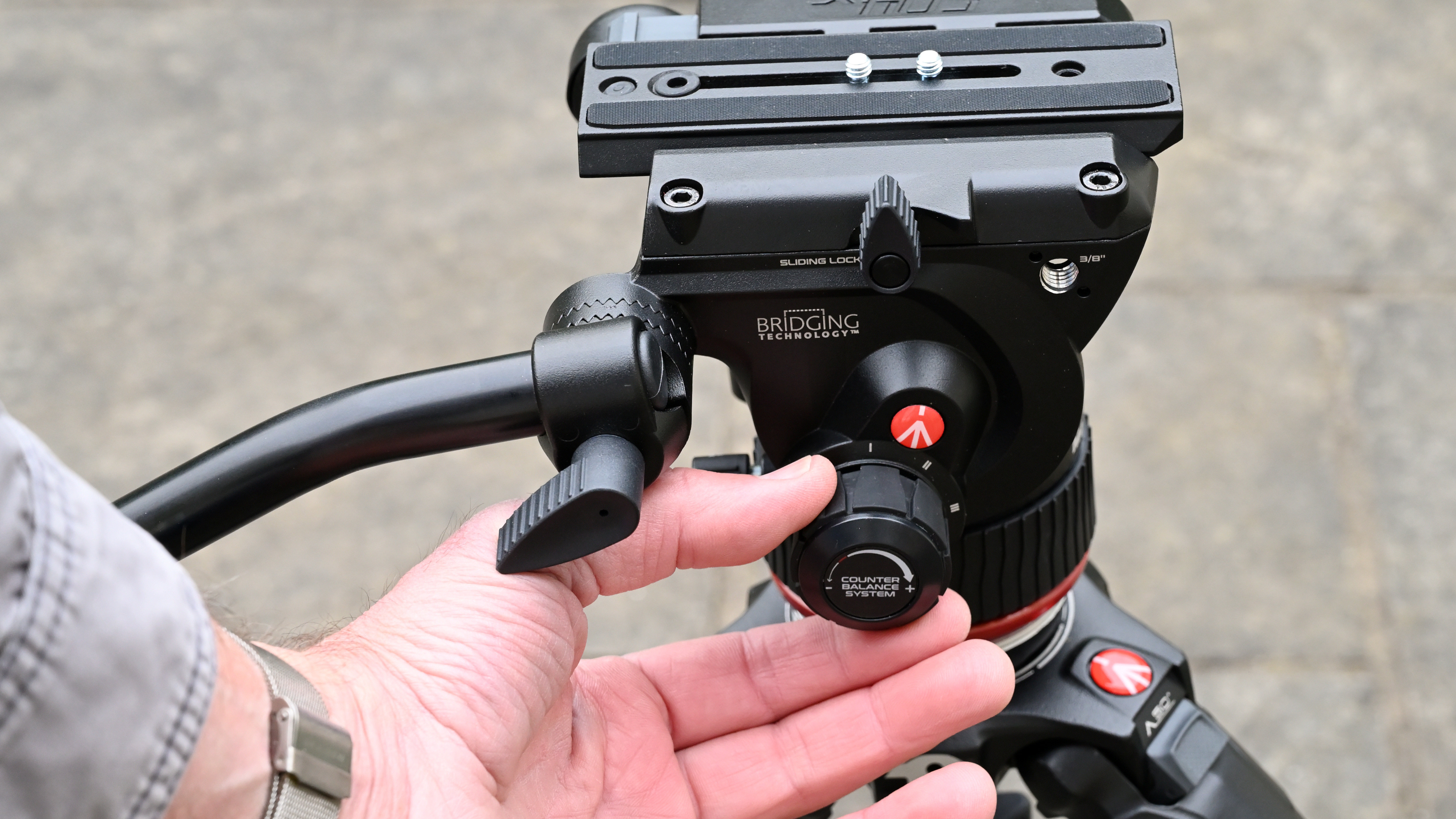
The head comes with a long quick-release plate with locking pins at each end and two camera fixing screws, although one can be easily removed if unneeded. Again, no tools are required. The long plate helps to ensure balancing the weight of an attached camera.
As well as a locking knob on the head, there’s a safety bar that needs to be pushed in before the plate can be removed, just to avoid any nasty accidents.
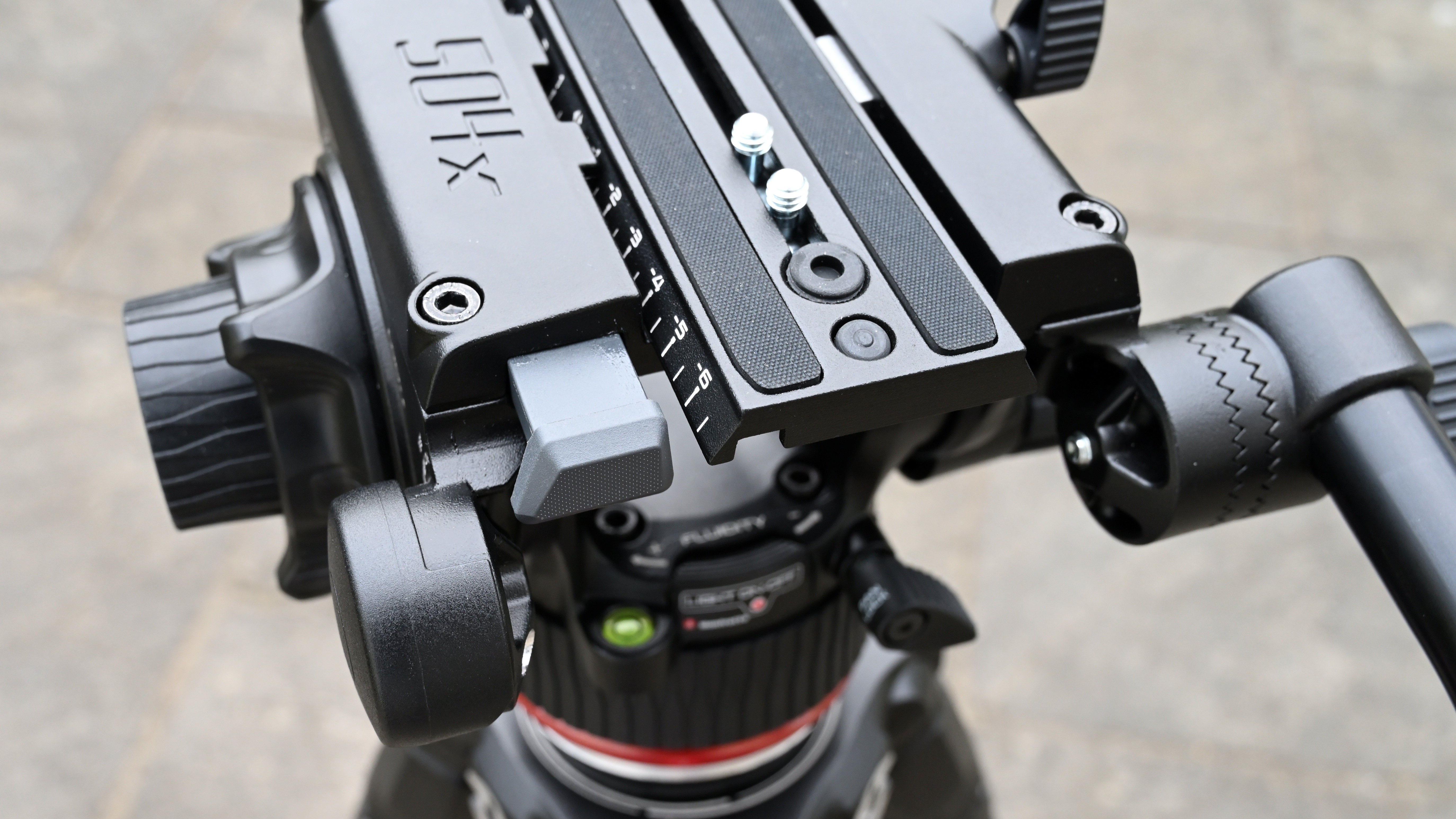
Down under, the legs are similarly tricked-up. The three carbon fiber sections of each leg have wide diameters of 29.2, 24.8, and 20.4mm, to enhance rigidity and stability as well as enabling the hefty payload rating. The diameters are actually identical to the three sections in the Manfrotto 055 MT055CXPRO3 tripod. Unlike in conventional tripods, however, the widest section is the middle one. After twisting this to the unlock position, the intermediate top section and narrowest bottom section can telescope in and out to any desired position, before relocking the whole assembly with another single twist.
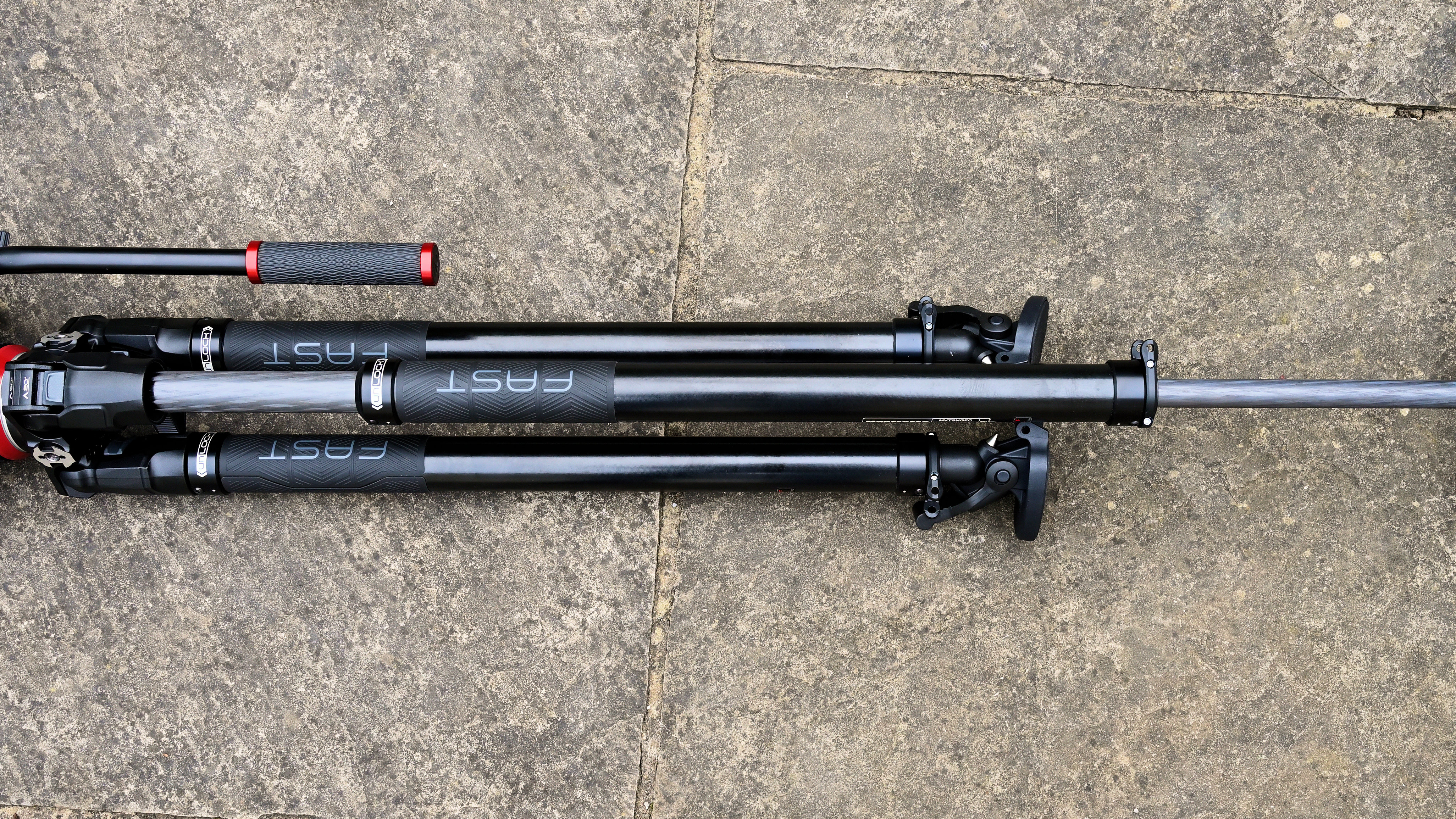
Helping to ensure a lofty maximum operating height of 171cm and a low-level 44.5cm minimum shooting height, the legs can be locked at three alternative angles of 20, 50, and 70 degrees. Up top, there are two further accessory mounting sockets with anti-rotation fixings, in addition to the accessory mounts on the head.
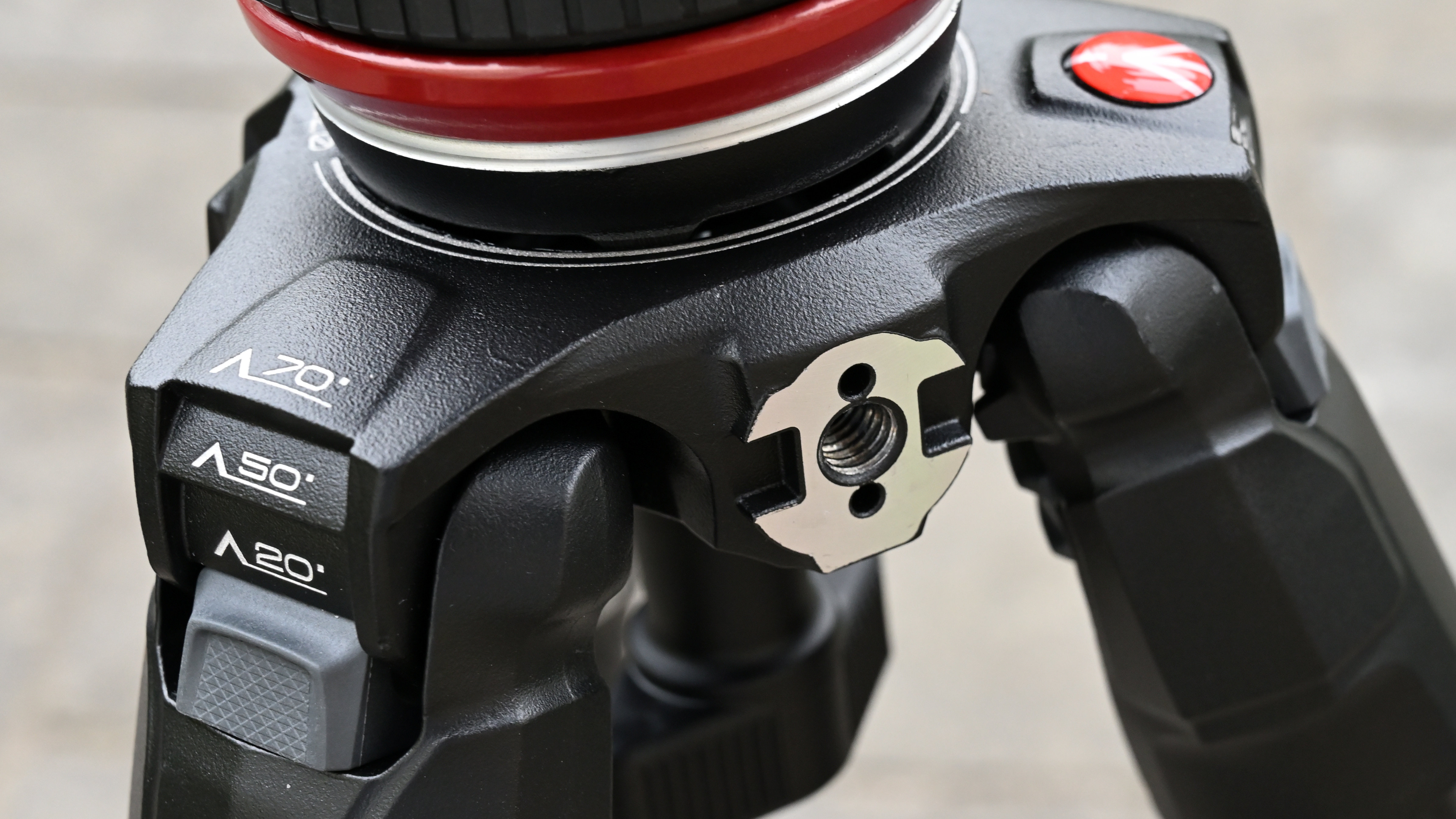
There’s also a built-in loop for adding a carrying strap or tether. You also get a Velcro strap for keeping the legs together while carrying the tripod, if you’re not popping it into the supplied padded carrying bag.
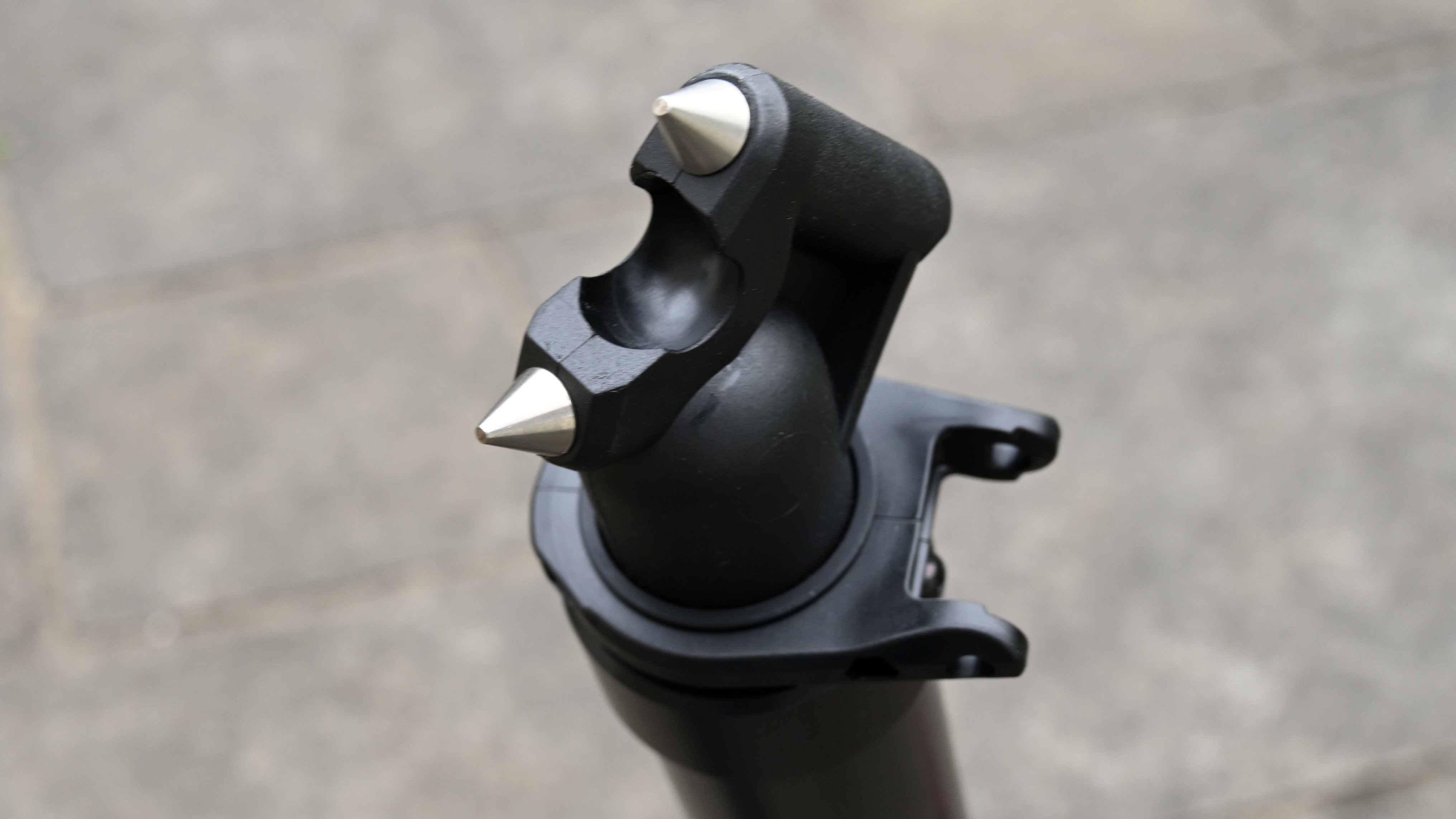
The foot of each leg features dual metal spikes for stability on grass and other soft surfaces. Slip-on rubber shoes are also supplied in the kit, and more ideal for hard surfaces.
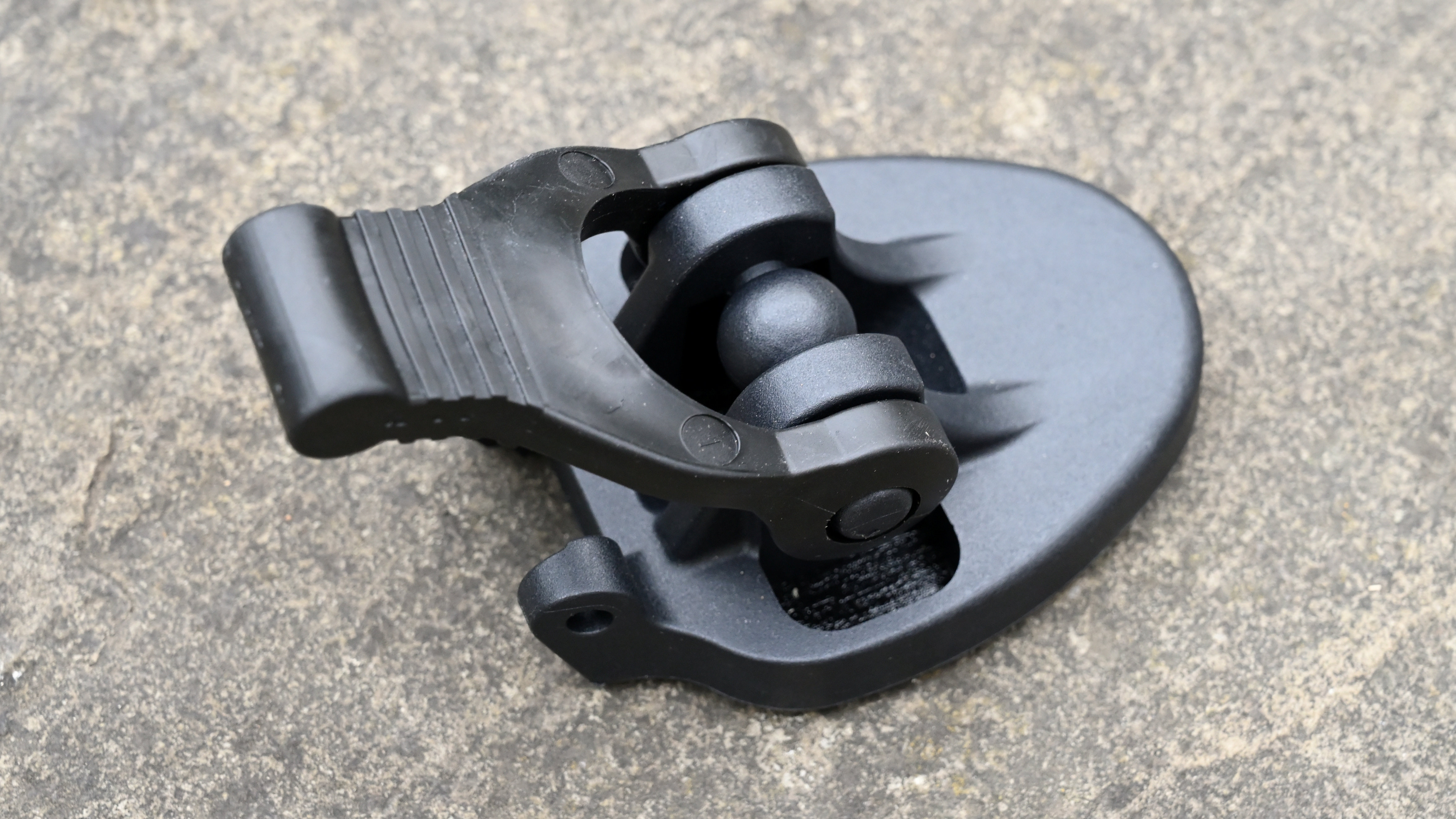
Build and handling
Build quality feels of an exceptional standard throughout, based on premium-grade carbon fiber and aluminum parts, precision-engineered. The independent adjustment and locking knobs for pan and tilt work to perfection and the quick-release plate locks in with reassuring security.
For counterbalance adjustment, Manfrotto recommends attaching the camera, then tilting it with the locking knob released and building up the counterbalance weight until it doesn’t tilt any further. Adjustments are quick and easy in practice.
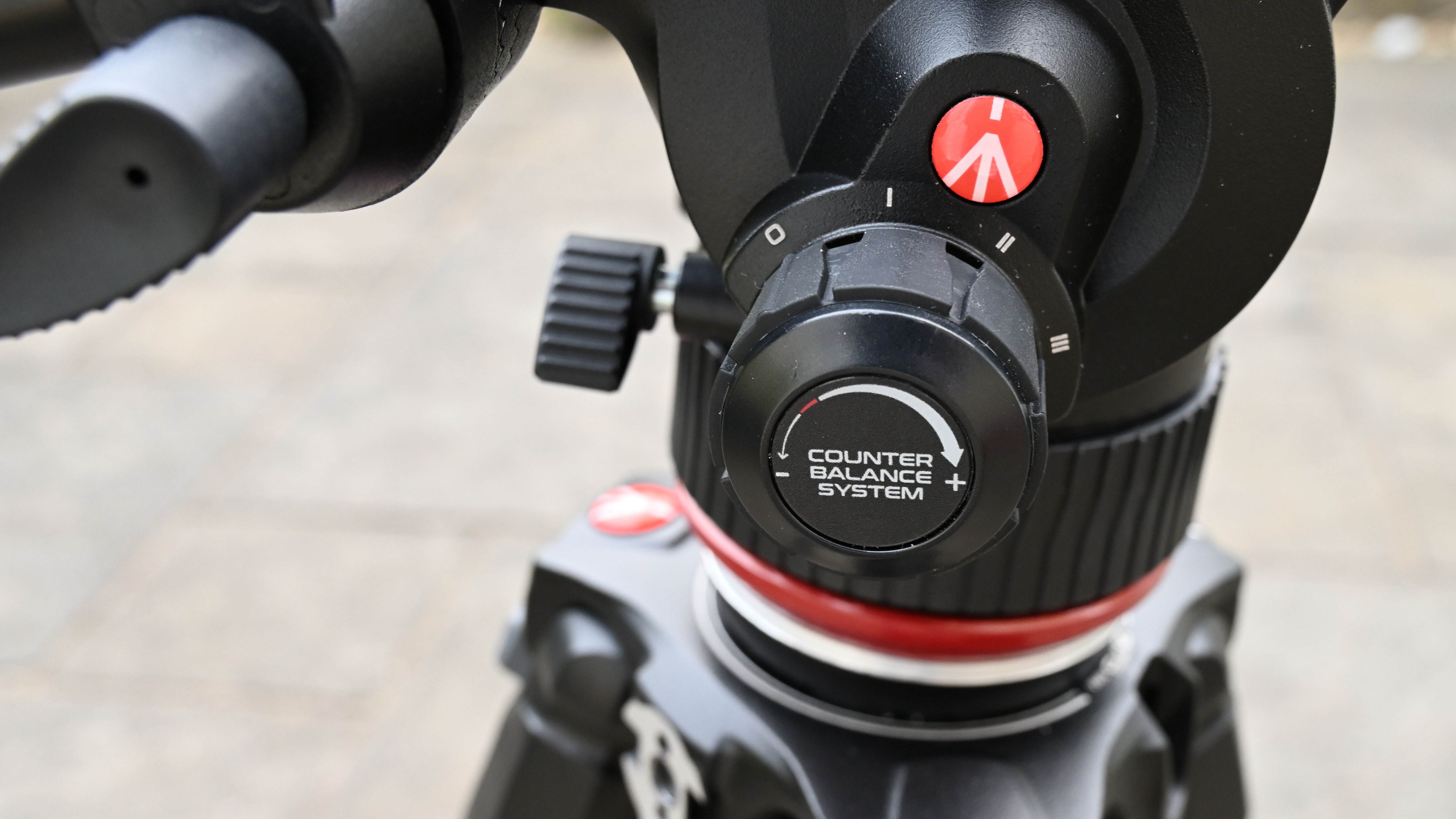
Nobody wants wonky video unless it’s for creative effect. Levelling the camera is straightforward thanks to the included, illuminated bubble level, and a single locking knob for the bowl that extends downwards between the three legs. To ensure that the head doesn’t come unscrewed accidentally while panning, a locking screw secures it to the bowl assembly.
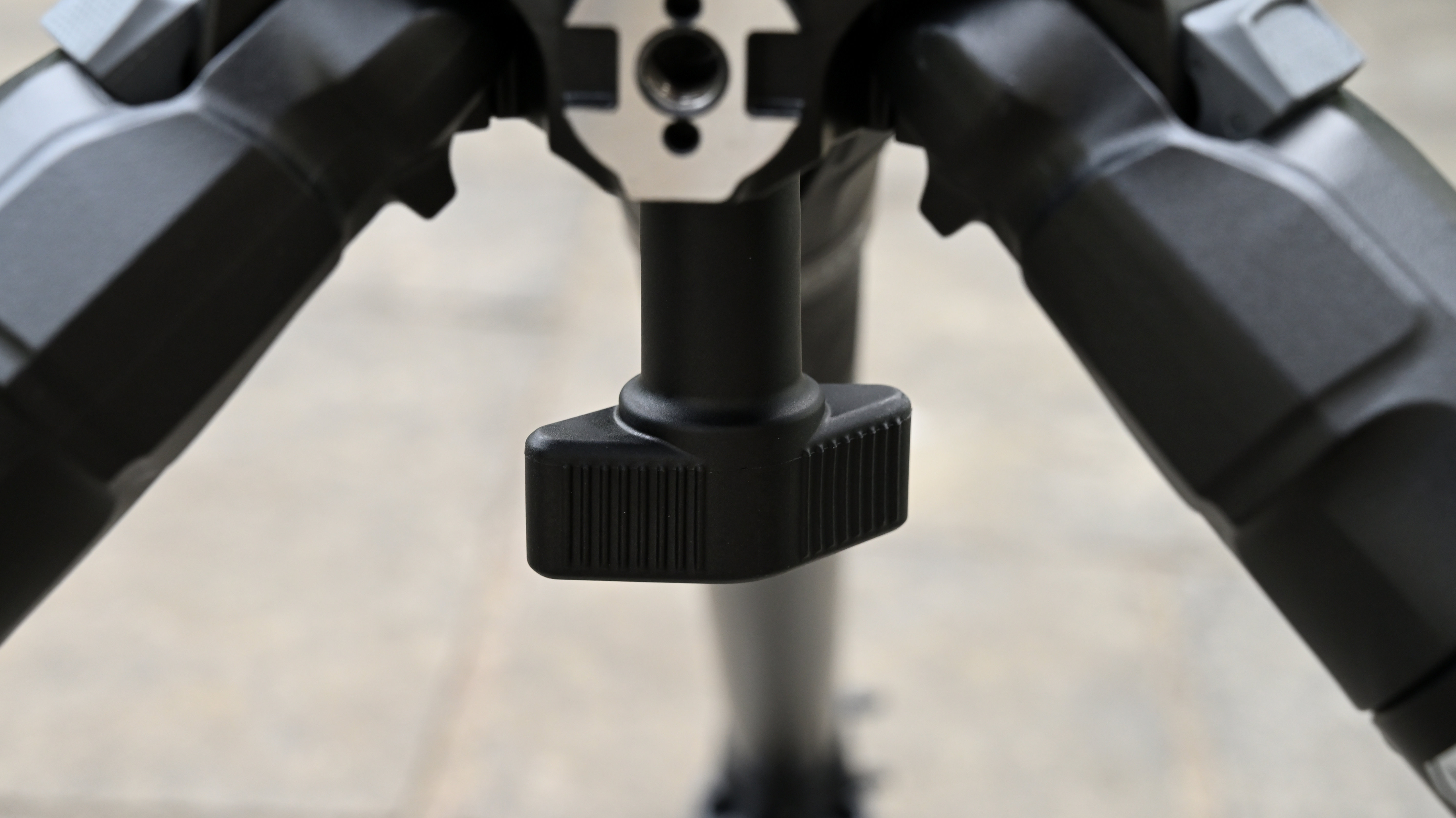
The single-twist ‘Fast’ legs make quick setup an absolute breeze. In the instruction manual, however, Manfrotto repeatedly warns against attempting to loosen the twisting section beyond its end-stop, which can cause damage to the mechanism. It’s similarly quick and easy to select any of the three locking leg angles for each leg, thanks to 3-poision sliding locks at the top.
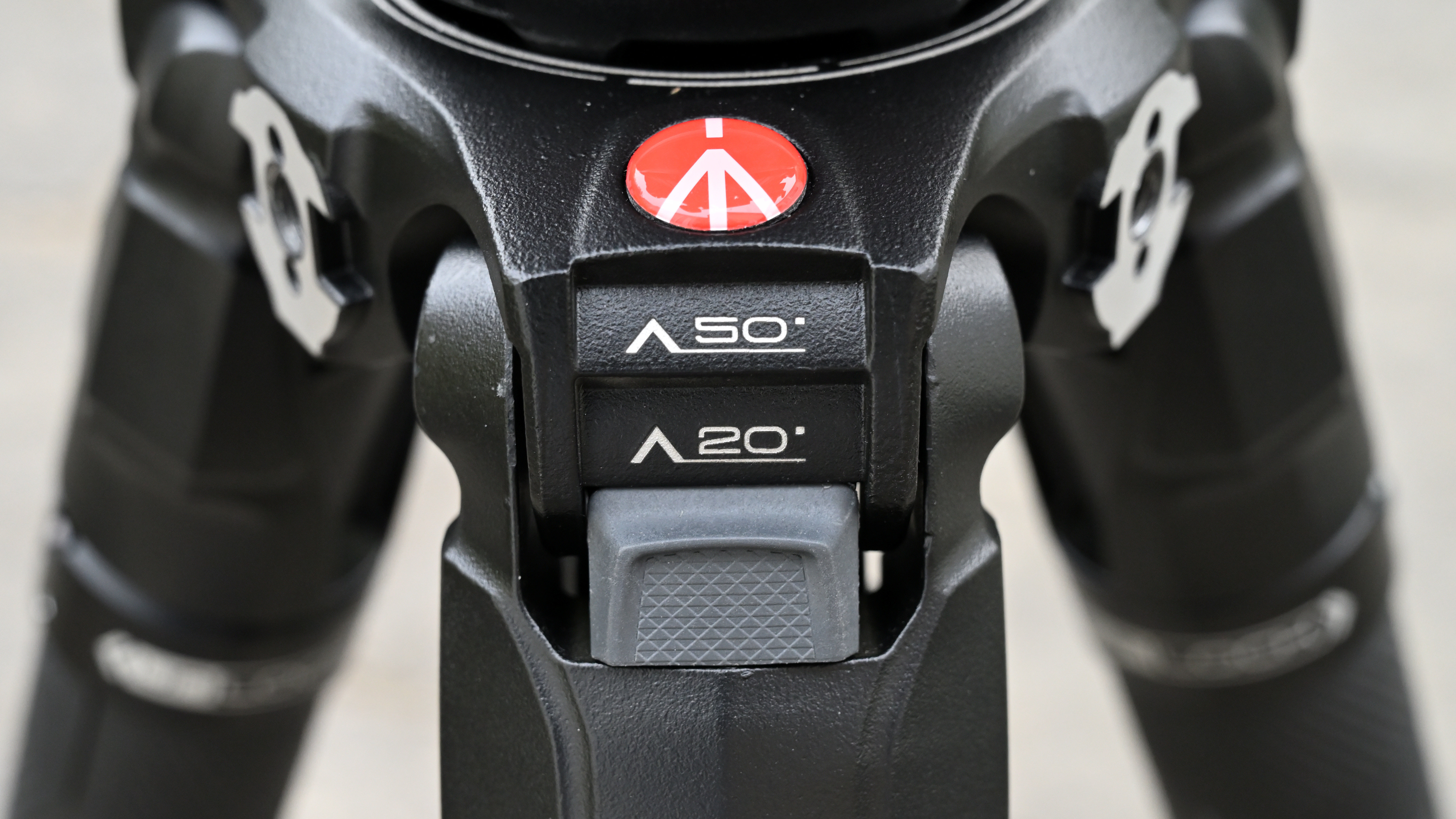
Down at the bottom, it’s also fast and simple to fit or remove the rubber overshoes for the spiked feet.
The two keyed Easy Link accessory sockets on the legs enable attachment of optional Manfrotto arms and other accessories, with anti-rotation locking which also works with ARRI accessories. One feature that some might miss is a spreader but Manfrotto sells a 2-in-1 Mid-Level/Ground Spreader separately as an optional extra (code number MVASPR2N1) for around £95/$95. As its name suggests, you can attach it as a ground-level spreader when working on flat surfaces, or as a mid-level spreader if you’re shooting on uneven terrain.

Performance
As a set of legs and a video head, both components perform extremely well. Combined together, they’re truly exceptional. Everything just works, and works brilliantly well. The head and legs are amazingly quick to set up and intuitive to use.
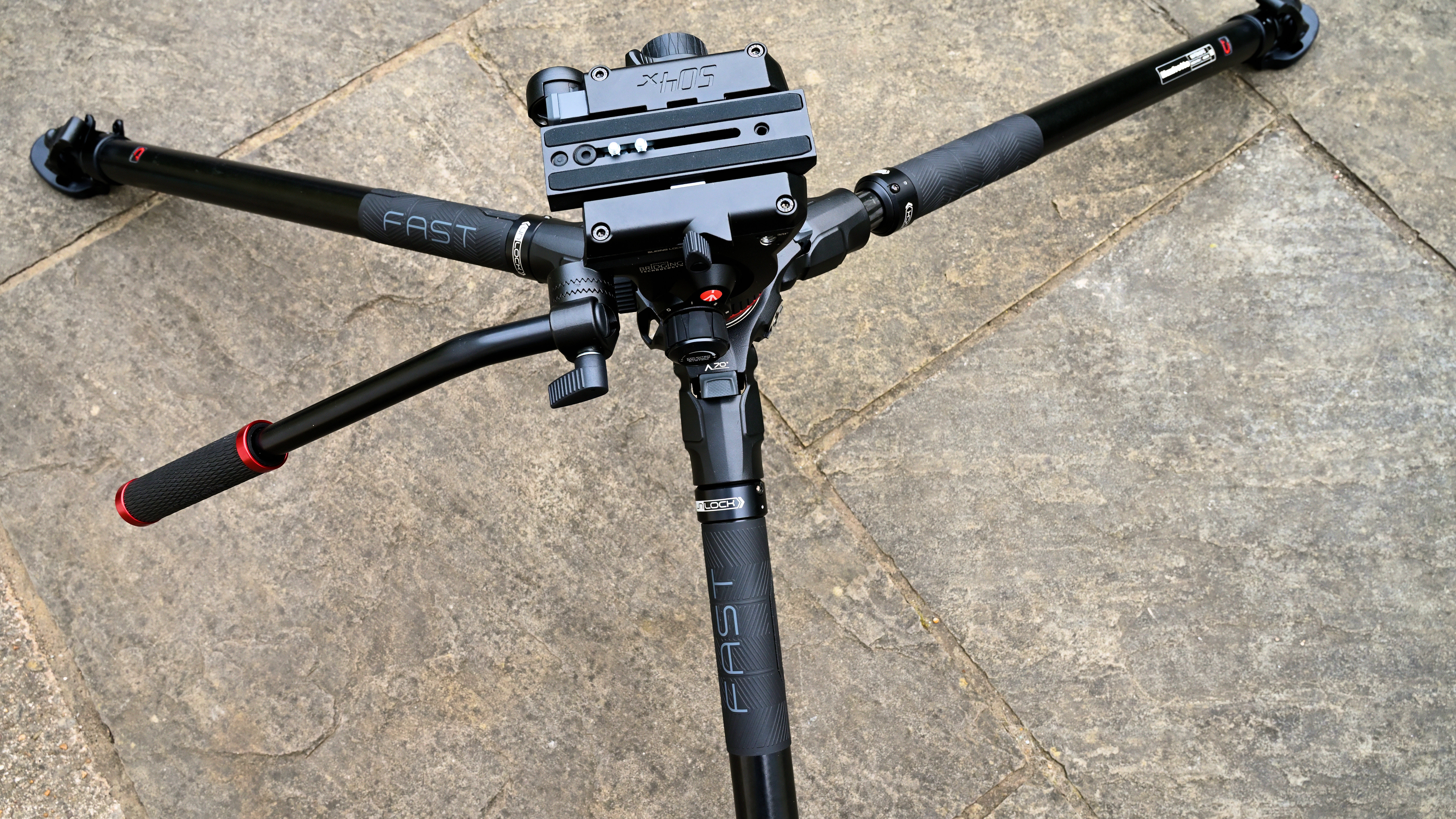
Vitally, the fluid pan and tilt mechanisms enable ultra-smooth movement, with the luxury of adjustable damping. Similarly the sliding quick-release plate and counterbalance system ensure really well-balanced operation.
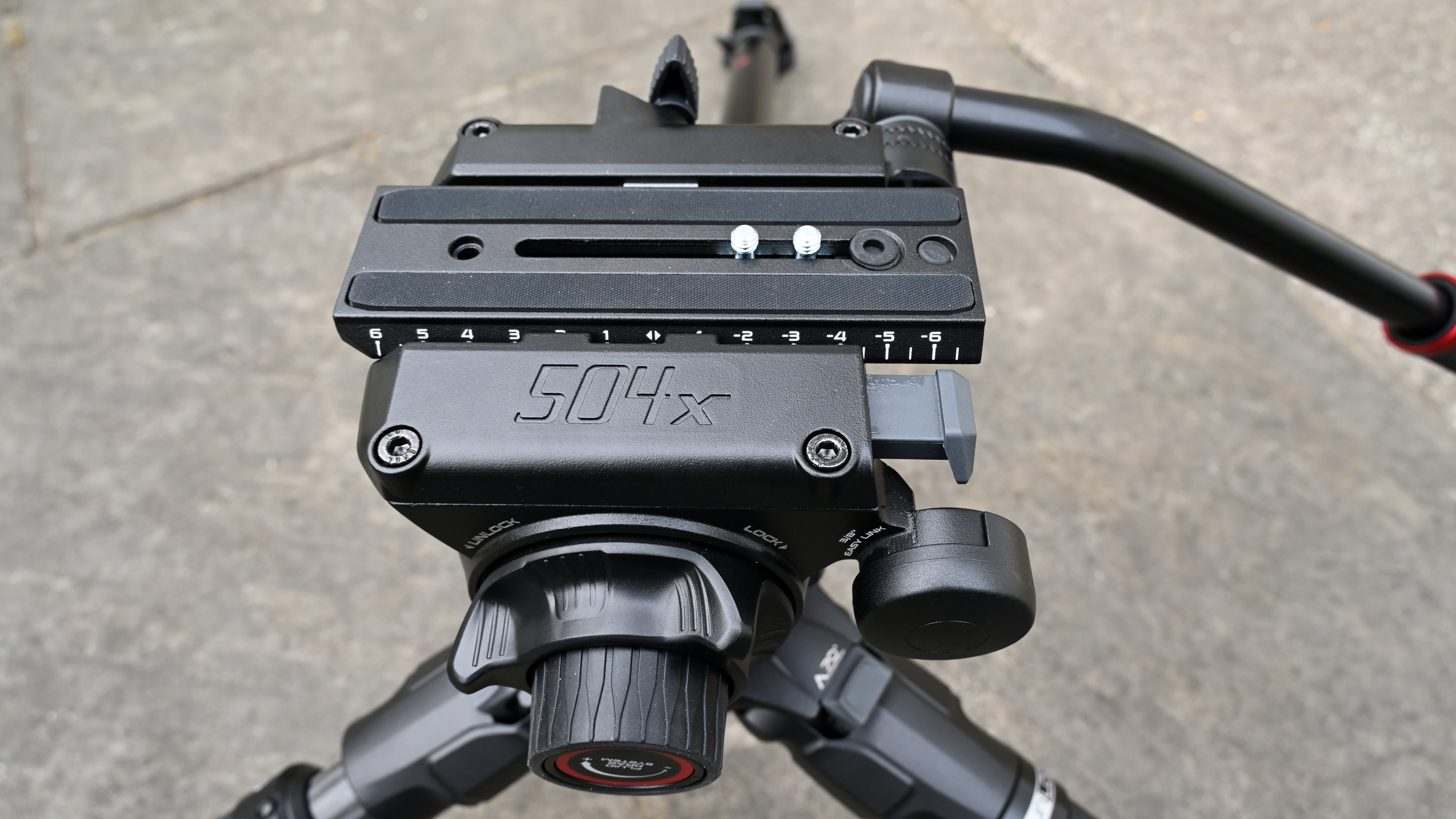
The kit offers rock-solid support with very high resistance to unwanted flexing and wobbling, even at the maximum operating height. The same goes for really low shooting angles, employing the 3-angle leg locking mechanisms. It would have been the cherry on the cake if the compact, fold-away 2-in-1 spreader was included in the kit but performance is nevertheless superb without it.
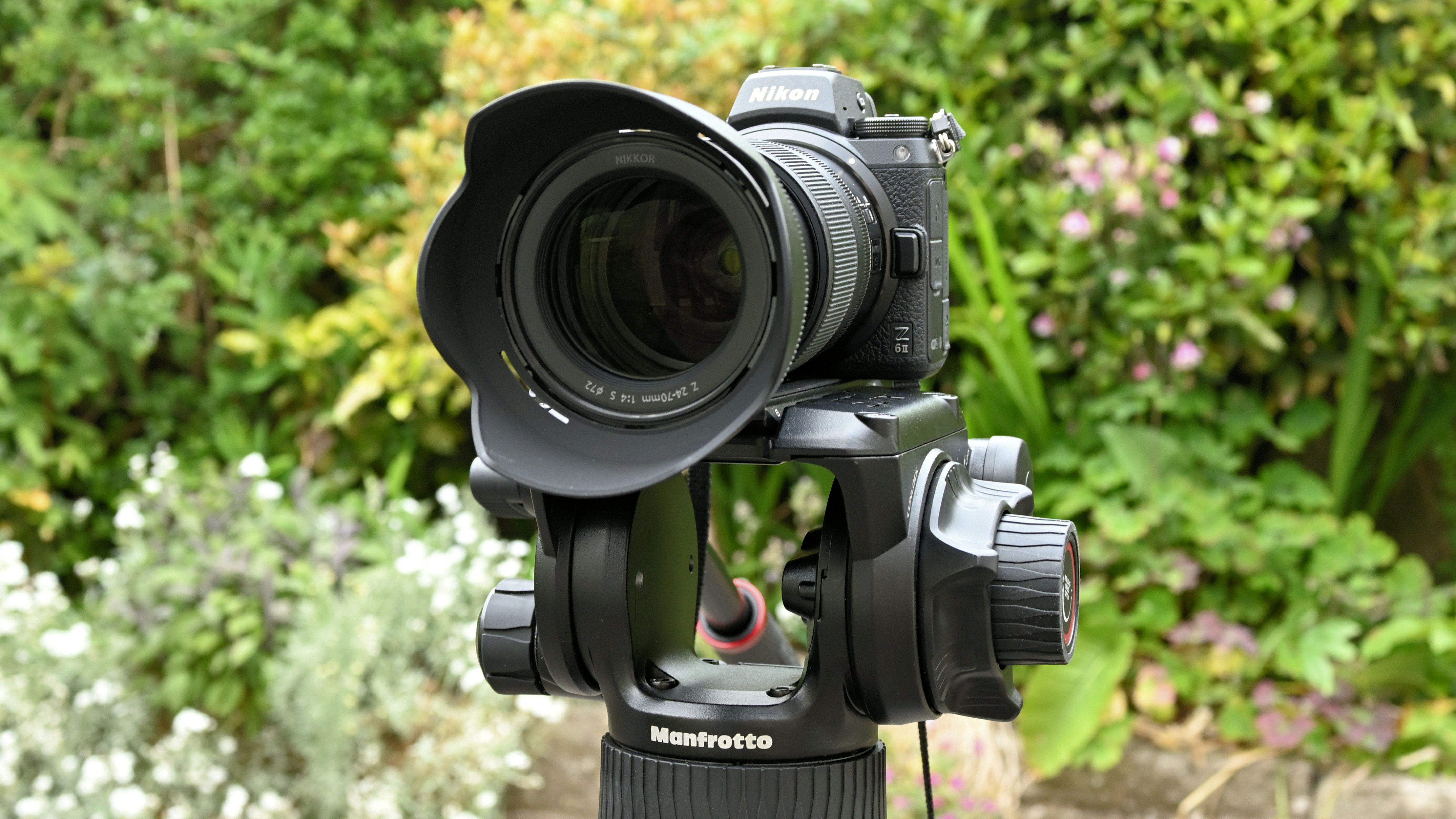
Verdict
The 504X Fluid Video Head in this up-market kit for pro-grade video shooting is a masterpiece in its own right. It’s highly advanced and very versatile yet simple and intuitive to use. The head is supported by a set of 635 Fast Single Leg Carbon legs, which give rock-solid support. It’s ‘fast’ because the three sections in each leg can be extended or retracted with a single twist of the outer section. The kit has a hefty 12kg load rating but weighs an entirely manageable 5.8kg, and comes complete with a padded bag. Build quality and operational performance is absolutely superb throughout.
Read more: find out about the best tripod for photography in our guide. Or need a tripod for video? Check out our picks for the best video tripod.
Matthew Richards is a photographer and journalist who has spent years using and reviewing all manner of photo gear. He is Digital Camera World's principal lens reviewer – and has tested more primes and zooms than most people have had hot dinners!
His expertise with equipment doesn’t end there, though. He is also an encyclopedia when it comes to all manner of cameras, camera holsters and bags, flashguns, tripods and heads, printers, papers and inks, and just about anything imaging-related.
In an earlier life he was a broadcast engineer at the BBC, as well as a former editor of PC Guide.

